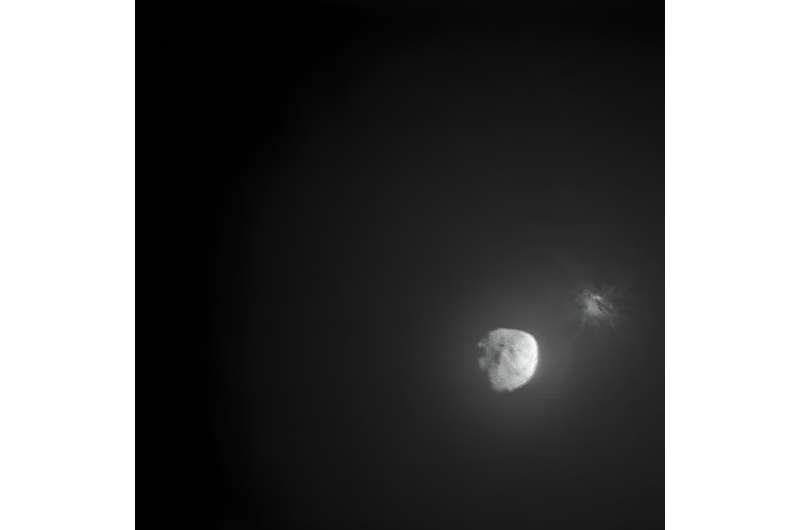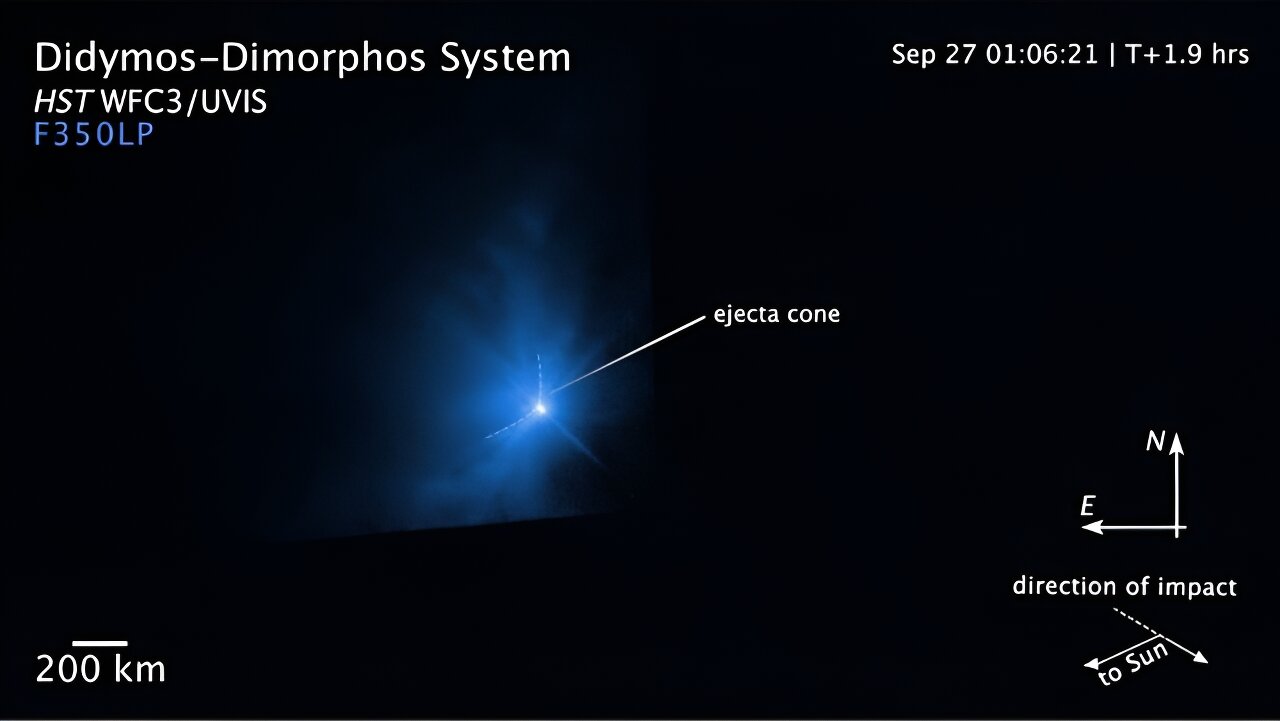After NASA’s DART mission slammed into asteroid Dimorphous in September 2022, scientists determined the impact caused tons of rock to be ejected from the small asteroid’s surface. But more importantly, DART’s impact altered Dimorphos’ orbital period, decreasing it by about 33 minutes.
However, a group of researchers measured the orbital period about a month later and discovered that it had increased to 34 minutes—1 minute longer than the first measurements. Even though it was a single impact from DART, some force continued to slow the asteroid’s orbit, and astronomers don’t yet know what that mechanism might be.
“We find that no mechanism previously presented for this system can account for this large of a period change, and drag from impact ejecta is an unlikely explanation,” the researchers wrote in their paper, published as a preprint on arXiv. “Further observations of the (65803) Didymos system are needed to both confirm our result and to further understand this system post impact.”
DART’s purpose was a test of how asteroids respond to impacts. When the first data following the impact was released, the change in orbital period was great news, since this type of kinetic impact is a planetary defense technique, where a spacecraft intentionally collides with a Potentially Hazardous Asteroid to alter its course. The data from DART is helping both NASA and ESA prepare for the possibility of having to redirect an asteroid away from an eventual impact with Earth.
“We know the initial experiment worked. Now we can start to apply this knowledge,” said Andy Rivkin, DART investigation team co-lead at the Johns Hopkins Applied Physics Lab (APL), back in December 2022 when the first DART data was released.

DART weighed 610 kg (1,340 lb) and it crashed into Dimorphos at approximately 22,530 km/h (14,000 mph. DART excavated a crater on the Dimorphos’ surface that ejected more than 900,000 kg (990 US tons) of debris into space. Data also indicated DART’s impact into Dimorphos also changed the trajectory of the moonlet’s parent asteroid, Didymos.
Scientists estimated DART’s impact displaced over one million kilograms (two million pounds) of the dusty rock into space—or enough to fill six or seven railroad cars. The DART science team is continuing to analyze their data, as well as new information on the composition of the asteroid moonlet and the characteristics of the ejecta to learn just how much DART’s initial hit moved the asteroid, and how much came from the recoil.
But now another group of researchers, led by Taylor Gudebski and Elisabeth Heldridge, used the 0.7m telescope at the Thacher Observatory located on the campus of The Thacher School in Ventura County, California to make their observations.
They measured the post-collision period change in observations taken about 20-30 days after the initial data, and their results indicate that the system period may have shortened during this brief time.
One thought was that since the debris cloud was so large and changed over time, it could influence Dimorphos’ orbit. In a study released in March 2023, astronomers tracked the evolution of the debris cloud from the collision for a month and found that as the debris expanded outward, structures started forming, such as clumps, spirals and a long tail pushed away by the sun’s radiation. But Gudebski and Heldridge’s team doesn’t think the debris would account for the change they observed.
Interestingly, the researchers said, even before the DART collision, the period of Dimorphos was observed to be slowly changing. But, the researchers wrote, even that amount of change can’t account for the difference, “as it was 4 orders of magnitude too small to account for the difference we see.”
“Therefore, whatever effect was causing the orbital decay before the collision cannot account for the discrepancy we observe; this includes the binary YORP effect, mutual tides, differential Yarkovsky force, nodal precession, and mass loss,” they said.
This group of researchers and the DART team will continue to observe and study DART’s impact. It will be interesting to find out if the orbital period continues to decline or not, and how that might affect the use of kinetic impactors.
Additionally, another spacecraft will launch in 2024 to study Dimorphos even closer. ESA’s Hera mission should arrive at Didymos and Dimorphos in December 2026. Hera will undertake a detailed study of Dimorphos to understand more deeply how the impact affected it.
More information:
Taylor Gudebski et al, New Post-DART Collision Period for the Didymos System: Evidence for Anomalous Orbital Decay, arXiv (2023). DOI: 10.48550/arxiv.2308.15488
Citation:
DART had a surprising impact on its target, according to recent observations (2023, September 8)
retrieved 9 September 2023
from https://phys.org/news/2023-09-dart-impact.html
This document is subject to copyright. Apart from any fair dealing for the purpose of private study or research, no
part may be reproduced without the written permission. The content is provided for information purposes only.
Denial of responsibility! My Droll is an automatic aggregator of Global media. In each content, the hyperlink to the primary source is specified. All trademarks belong to their rightful owners, and all materials to their authors. For any complaint, please reach us at – [email protected]. We will take necessary action within 24 hours.


